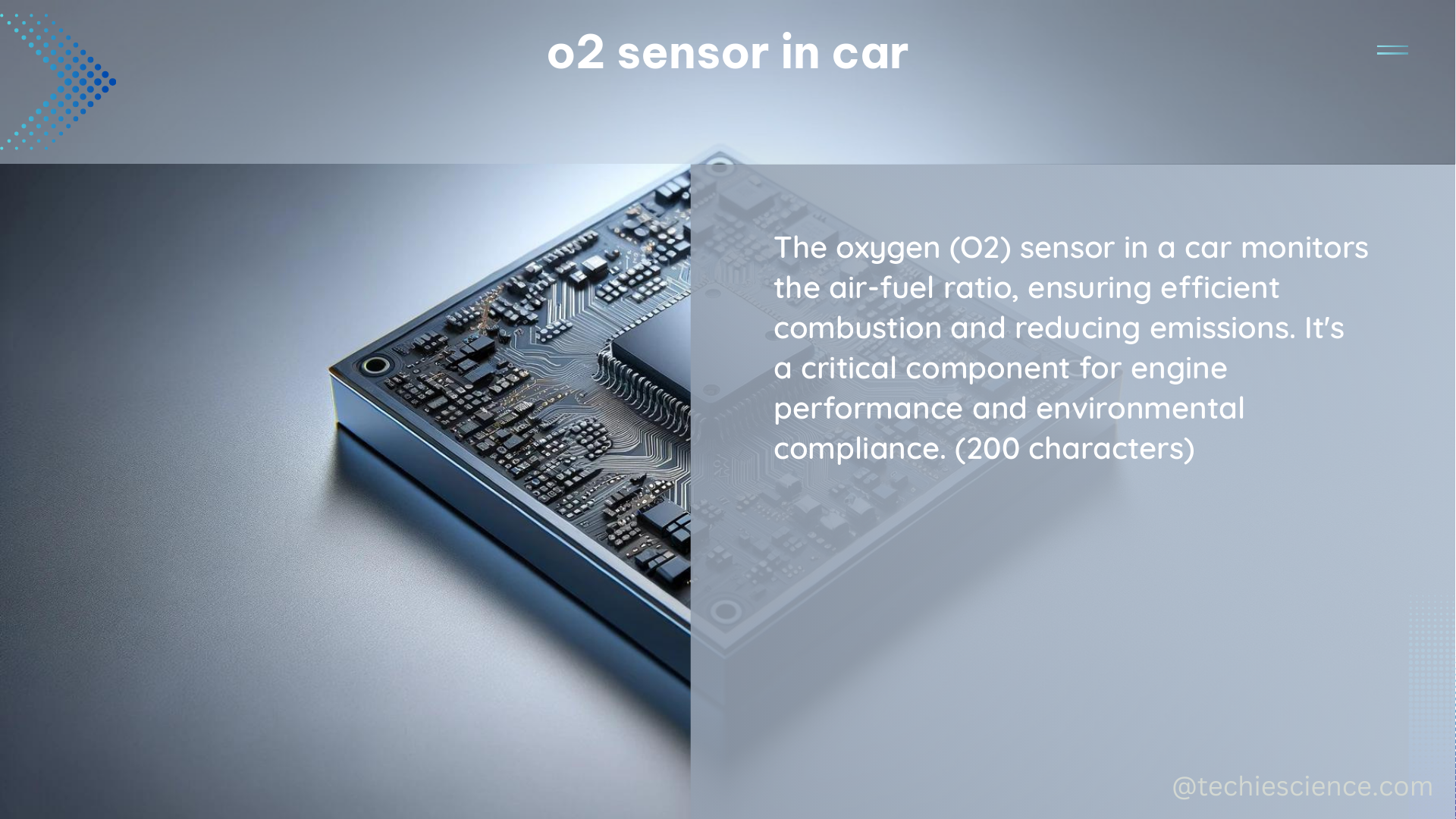The oxygen sensor, or O2 sensor, is a crucial component in a car’s exhaust system that measures the amount of oxygen in the exhaust. It is responsible for maintaining the optimal balance between air and fuel for efficient emissions. Cars typically have at least two oxygen sensors, one before and one after the catalytic converter. The pre-cat sensor regulates fuel supply, while the downstream sensor measures the efficiency of the catalytic converter.
Understanding O2 Sensor Types
O2 sensors can be categorized as narrow band or wide band. Narrowband sensors can only quantify between 0.99-1.01 λ, or like 14.6-14.8 gasoline air-fuel ratio (AFR). In contrast, wideband sensors can quantify values between the air-to-fuel ratios of 9.65-to-1 and 20-to-1, allowing for more precise tuning of the engine for better performance.
Narrowband O2 Sensors
- Measure air-fuel ratio in a very narrow range (0.99-1.01 λ or 14.6-14.8 gasoline AFR)
- Provide a simple binary signal (rich or lean) to the ECU
- Less expensive and more common in production vehicles
Wideband O2 Sensors
- Measure air-fuel ratio over a much wider range (9.65-to-1 to 20-to-1)
- Provide a linear voltage signal proportional to the air-fuel ratio
- Allow for more precise tuning and optimization of engine performance
- More expensive and commonly used in high-performance or modified vehicles
How O2 Sensors Work

The oxygen sensor works by measuring the difference in the amount of oxygen between that present in the outside air and that present in the exhaust. This difference promotes the flow of oxygen ions and produces a voltage signal.
- If the exhaust gas mixture is too rich (too much fuel), a signal is sent to the engine’s Electronic Control Unit (ECU) to decrease the amount of fuel added into the cylinder.
- If the exhaust gas mixture is too lean (not enough fuel), a signal is sent to increase the amount of fuel used in the engine.
Wide band O2 sensors have an additional O2 pumping cell to regulate the amount of oxygen present in the sensing element, allowing measurement of a much wider air/fuel ratio. This is particularly useful for car enthusiasts who want more precise tuning of the engine for better performance.
O2 Sensor Failure and Troubleshooting
O2 sensors can fail due to a variety of reasons, including:
- Contamination from an excessively rich fuel mixture condition or oil blow-by in an older engine
- Exposure to high temperatures and wear over time
When an O2 sensor fails, the computer can no longer sense the air/fuel ratio, which can result in:
- Poor fuel economy
- Rough engine idle or misfiring
- Sluggish engine performance
To troubleshoot an O2 sensor, you can:
- Read any fault codes using a diagnostic tool
- Check the resistance of the heater, which should be quite low
- Lambda sensors have an internal heater, so checking the resistance can help identify any issues with the sensor
If you’re not comfortable working with electrical systems or diagnostic tools, it’s best to leave the diagnosis and repair to a professional.
Upgrading to Wideband O2 Sensors
While O2 sensors are typically associated with emissions and fuel efficiency, they can also play a role in engine performance tuning. Wideband O2 sensors, in particular, can provide more precise measurements of the air-to-fuel ratio, allowing for more fine-tuned adjustments to the engine’s performance.
This can be especially useful for car enthusiasts who want to extract every last bit of performance from their vehicle. However, it’s important to note that upgrading to wideband O2 sensors may require replacing the computer that reads them as well, due to the different signal each puts out and the need for radically different programming.
Conclusion
The oxygen sensor is a crucial component in a car’s exhaust system that measures the amount of oxygen in the exhaust to maintain optimal emissions. O2 sensors can be narrow band or wide band, with the latter allowing for more precise tuning of the engine for better performance. O2 sensors can fail due to contamination, high temperatures, and wear over time, resulting in poor fuel economy, rough engine idle or misfiring, and sluggish engine performance. Troubleshooting an O2 sensor involves reading fault codes and checking the resistance of the heater.
References:
– Upgrading to Wideband O2 Sensors on Harley-Davidson Motorcycles
– Making Sense of Sensors: The Oxygen Sensor
– Upgrading to Wideband O2 Sensors on Harley-Davidson Motorcycles

The lambdageeks.com Core SME Team is a group of experienced subject matter experts from diverse scientific and technical fields including Physics, Chemistry, Technology,Electronics & Electrical Engineering, Automotive, Mechanical Engineering. Our team collaborates to create high-quality, well-researched articles on a wide range of science and technology topics for the lambdageeks.com website.
All Our Senior SME are having more than 7 Years of experience in the respective fields . They are either Working Industry Professionals or assocaited With different Universities. Refer Our Authors Page to get to know About our Core SMEs.